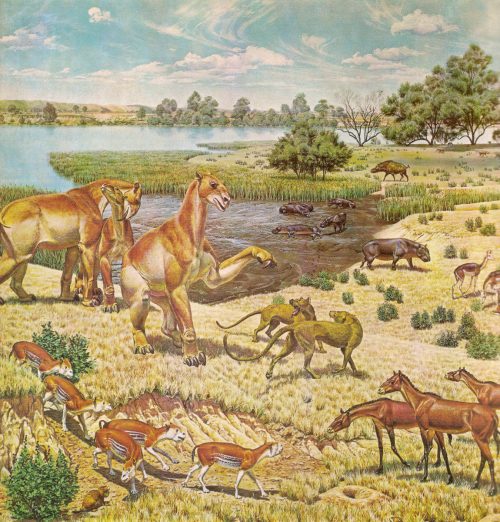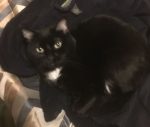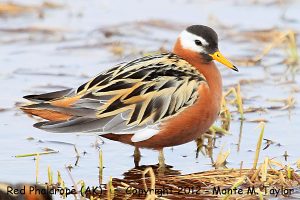Last night, Aron Ra got into a discussion about a claim that protein evolution is impossible, specifically, that different protein families could not have evolved. Here is the provocative and baseless claim.
There is no research that says protein evolution is possible, unless you appeal to evolution. That’s circular.
There is no research published that explains how a new protein family, with stable novel folds, can evolve in the rugged evolutionary landscape. Only conjecture and always with an appeal to the theory. That’s called theory laden evidence.I have issues with the premise that evolution is fact (bad science). That demands a better definition of evolution so I’ll clarify, I have problem with the premise that random mutation, gene duplication, gene transfer, gene shift, and anything I may have missed, under the influence of natural selection is sufficient to produce biodiversity.
Perhaps a new mechanism will be discovered, but at present there is no evidence that evolution is possible beyond an appeal to evolution.
There is a barrier to protein evolution. Gradual change doesn’t provide a path from one protein family to another because the landscape is rugged. Point mutations will lead proteins off the functional cliff. Duplication doesn’t fit the bill either, not enough variety. Fact is, without some sort of bridge protein evolution is inconceivable. No bridge has been found.
I’m not claiming that there isn’t one or that it will never be found, I’m saying there is no evidence for one. It’s a leap of faith to say it happened.
I know you’re not a fan of that word, faith, but there is no alternative. The only justification for that faith is ontology. It’s your belief in naturalism which cannot be proven one way or the other. in fact, the very problem I’m discussing here is a thorn in the side of naturalism.
You’ve waged a lifelong war against theism and always appeal to intellectual honesty. Well, I’m being intellectually honest. There in no evidence that evolution is possible because protein evolution has no known solution.
Proteins exist on peaks separated by valleys where function drops off completely. The “rugged landscape”. The peaks play home to a variety of related proteins with limited variety of amino acid sequences called families. A peak is more like a plateau. Small changes can produce variety of function and fitness. Large changes cause function to collapse into a valley where the protein gets deselected.
The amount of change required to find a new stable fold with novel function, a.k.a. a new family on its own plateau, far exceeds what proteins can tolerate by incremental change without losing all function. This is not controversial.
Proteins need to leap or require a bridge. Leaps in sequence change are irrational because the search space is too large and the target too small.
The presumption is that there is an unknown “bridge” that allows proteins to make the transition from one peak to another. That bridge has yet to be found (or even adequately hypothesised), and without it proteins are trapped on local peaks. Meaning evolution is limited to variety of what is, with no access to cool new stuff. Micro but not macro.
The premise that evolution is a fact allows for the presumption that “we don’t know yet” is a valid placeholder for the bridge. A glaring “god of the gaps”. My “dilemma” is how can evolution be called a fact, when the facts exist to challenge it? It can only be reckoned that belief is the “Jesus nut” that keeps it from flying apart.
Anyone who is a materialist will naturally, and justifiably, search for that bridge. Dualists can as well, but it’s discovery isn’t an imperative. For the theist, that bridge may well be agency. In any case, agency is no worse than “we don’t know yet” as a filler.
My question is, on what basis do you declare the materialist ontology correct and the dualist ontology false? The inability to test is a feature, not a test in itself.
What does it matter if the problem was before Eukaryotes? Evolution covers the first cell to everything. From what I’ve read, the Cambrian Explosion is where the problem is most evident with many new protein families that have no observed precursors. All within a tiny fraction of evolutionary time.
“A protein family is a group of proteins that share a common evolutionary origin, typically reflected in their similar amino acid sequences, structural features, and often their biological functions. These proteins are usually derived from a single ancestral gene that has undergone duplication and divergence over time, leading to variations within the family. Members of a protein family may differ in their specific roles or expression patterns but retain enough similarity to be classified together.” -Grok (I trust AI is allowed for definitions?)
I understand the standard hypothesis. Gene duplication allows one to remain stable while the other continues on down the evolutionary trail. I also understand there is a vast leap required for a protein to diverge into a new family. Recombination is most commonly considered for large leaps, though no evidence exists it can be done.
I understand the standard hypothesis. Gene duplication allows one to remain stable while the other continues on down the evolutionary trail. I also understand there is a vast leap required for a protein to diverge into a new family. Recombination is most commonly considered for large leaps, though no evidence exists it can be done.
I also understand that proteins are intolerant of big change. That paper by Axe estimated that only 1 in 10^63 random sequences fold right. Leaps mean a big change which hits that small target.
On the other hand, incremental changes enjoy a similar problem of losing functionality (which can kill all progress), while also facing time constraints. There isn’t enough time for evolution to search out functional sequences. Even a nice new protein with a stable fold must break the barrier of epistasis.
Finally, I’m talking about entirely new families. Think Superfamily. Like a transporter to the first protease. The information hurdle is massive, and the serendipity required makes Powerball look like a sure bet.
Evolution is not really varying allele frequencies. That works for HS kids but it falls short. Evolutionary theory is the explanation for those varying frequencies. Theories explain HOW, not what.
So we talked for a while about this silly claim. As Aron points out this is just the old show me a cat giving birth to a dog
creationist claim translated to show me a transport protein evolving into a protease
. It’s the same thing and the same answer. We can trace the ancestry of cats and dogs and see that they converge on a common ancestor in the distant past; we can trace the ancestry of various proteins and follow them back to a distant duplication event to the modern diverse pattern. The creationist wants to argue that the process is simply impossible by throwing around various sciencey terms. He uses the old creationist claim that the probability of a particular functional sequence is only 1 in 1063, a calculation built on faulty premises. He invokes the barrier of epistasis
…what barrier is that? I don’t think he knows what epistasis is, let alone the nature of his imagined barrier. He throws around the term rugged fitness landscapes
without recognizing that landscapes are an explanatory metaphor, not an actual physical entity.
If you don’t want to listen to us babble, I sent Aron a link to a paper by Tomoko Ohta that summarizes it all.
In eukaryote genomes, there are many kinds of gene families. Gene duplication and conversion are sources of the evolution of gene families, including those with uniform members and those with diverse functions. Population genetics theory on identity coefficients among gene members of a gene family shows that the balance between diversification by mutation, and homogenization by unequal crossing over and gene conversion, is important. Also, evolution of new functions is due to gene duplication followed by differentiation. Positive selection is necessary for the evolution of novel functions. However, many examples of current gene families suggest that both drift and selection are at work on their evolution.
The creationist says that all of that is inconceivable, of course. Never mind that we have evidence of each incremental step and can see intermediates in the process preserved in the genome.
Then he falls back on free will and morality as obstacles to evolution, somehow.











